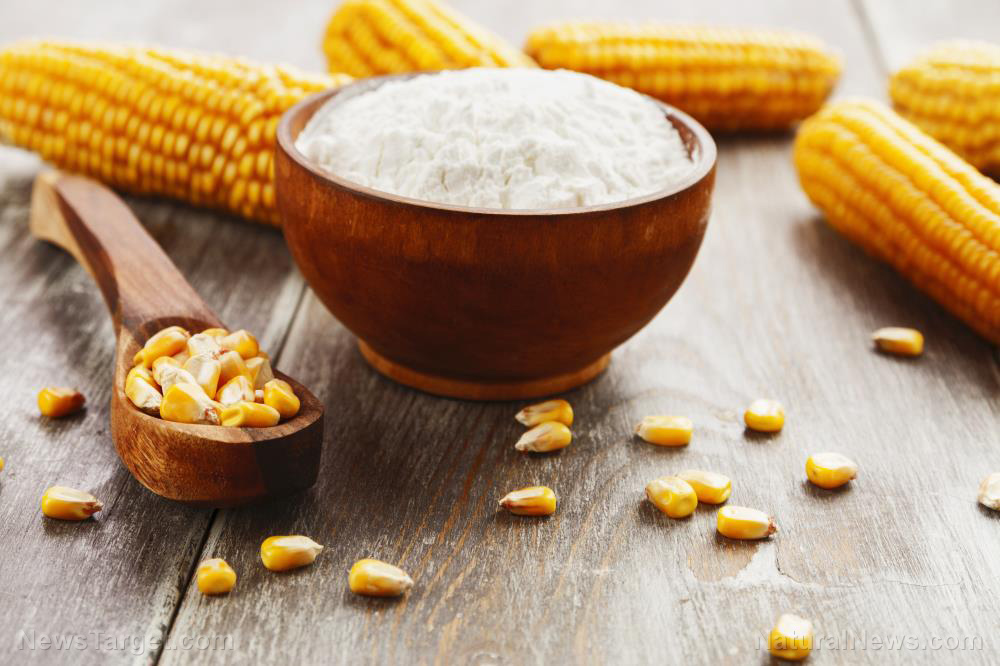
What is hominy?
Hominy is whole-kernel corn that's boiled in strong lye water to dissolve its tough outer shell, or pericarp. This leaves a puffy soft kernel that you can use in various recipes. In a post-SHTF world, you can make hominy if you grow corn in your home garden and have access to wood ashes, which you can get after making fires.
Combine hominy in your preferred form with beans, as the Native Americans did, to make a dish that's rich in protein.
Nixtamalization and hominy
Hominy is made from maize, or field corn, that's either white or yellow. This type of corn is used to make corn flakes, cornmeal and other grain products. It's different from sweet corn, which you can eat on the cob.
Hominy is made through nixtamalization, a process that involves soaking corn in an alkaline solution of calcium hydroxide made from slaked lime, lye or wood ash. Nixtamalization changes the corn in beneficial ways. For instance, it alters the structure of the proteins and carbohydrates in the corn such that the ground grain sticks together when mixed with water.
The process also removes the husks of the corn so it's easier to grind. The final product is a very finely ground dough (masa) that you can use to make tortillas, tamales and taquerias. (Related: Prepper recipes: How to make long-lasting lemon energy bars.)
How to make hominy
Hominy is commonly used in Southern cooking and is often served as a side dish. Hominy kernels can be dried, and if kept dry, they will last for a long time. You can easily reconstitute the dried kernels with cool water to make fresh hominy. Alternatively, you can grind the dried kernels to make corn flour or use them to make tortillas.
You don’t need special corn to make hominy. Whatever kind of corn you use, just keep it dry since corn is prone to mold that may cause food poisoning.
To make a small batch of hominy, combine one cup of corn and one cup of ash (sifted) with two cups of water. Add more water later if the mixture is too thick. To make more hominy, follow the same ratio of corn to ash. You can use less ash since the water leaches out the potassium hydroxide from the ash to create the lye water. You also don't have to worry about eating lye because you will thoroughly rinse it before preparing the food.
Steps:
- Put the water, ash and corn in a stainless steel saucepan. Don't use an aluminum pan because the caustic lye will corrode your pan. Cover and place the pan on a hot wood stove. It will take about three hours on a wood stove, or an hour and a half on a range-top, to boil the lye water. Stir regularly to prevent the ash and corn from settling to the bottom of the pot.
- Once the mixture boils, turn down the heat and let it simmer.
- After a couple of hours on a wood stove, test the kernels to see if they’re done. Take out a few and rinse them thoroughly. The kernels should feel soft and slippery. When the shells are slipping off or if the kernels feel soft, the hominy is done simmering in the lye water.
- Rinse thoroughly. Separate the nixtamalized corn from the ashy sludge. Use a colander to strain and rinse the ash sludge from the corn. Make sure you have a large bowl to catch the liquid or it might clog your drain or plumbing. Dispose of the liquid outdoors in areas you want to keep weed-free.
- Rinse again. Change the water several times until the hominy is clean. Do this by pouring water in a large bowl with the hominy. The kernels will sink but the ash and dissolved shells will float so you can pour them off. Swish the corn in the liquid to loosen stuck shell bits.
- Pour the water off carefully so the corn stays on the bottom of the pan while the loose husk bits float away. Rinse until you don’t see any semi-transparent shell bits.
- When you're done, the water should run clear, not a cloudy gray. If the hominy tastes a little bitter, it still has the lye solution on it.
How to use hominy
Here are several ways to use hominy:
Cook it plain
If the kernels are too al dente, boil it in water for a couple of minutes until soft. Serve the hominy with a little salt and butter.
Make masa
Mash up the hominy to make a ball of masa dough. Use a simple grinder to mash the hominy into yellow dough. When forming the balls, squeeze them to see if they squish or crack and break.
If the dough splits and breaks, it means it's too dry. Add a bit of water and knead it in. Use a pinch of salt with a bit of pepper per golf ball-sized lump. One golf ball-sized lump can produce a five or six-inch tortilla. Thinner tortillas cook better, but since they're thinner they might easily break before getting to the pan. Cook the masa without any oil in a dry cast-iron skillet at medium-high heat until browned.
Make flour
Once dried, hominy can be used to make flour. Store dry hominy in sealed jars with moisture absorbers to extend their shelf life. Dry hominy can be ground in a hand mill or with a grinding stone to make corn flour.
Hominy is a versatile ingredient that can be paired with other ingredients like beans, meat or vegetables to make filling dishes that will keep your belly full after SHTF.
Sources include:
Please contact us for more information.























